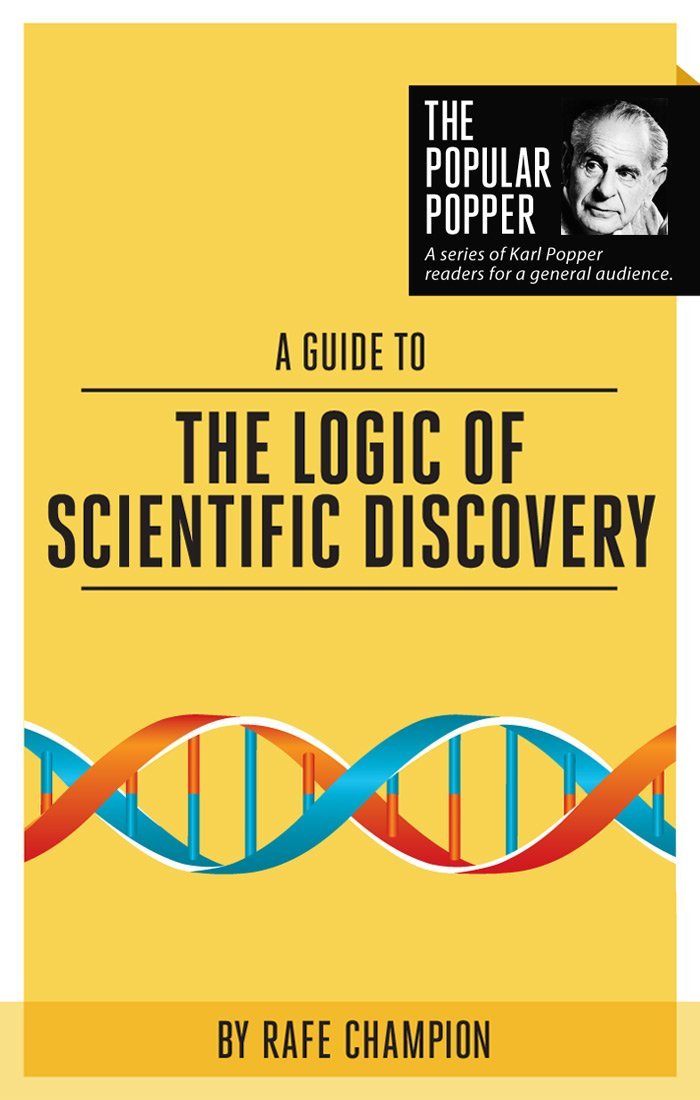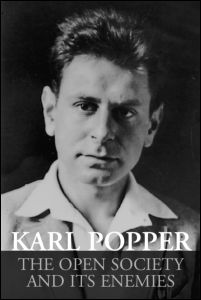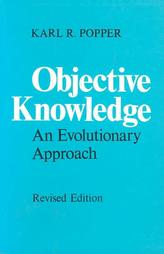This is an academic defence of the rational and humanistic tradition in literary studies that is out of favour in the universities at present where the humanities and social sciences have been radically politicised by the left. There may not be much readership for this book on campus but it is a welcome and much-needed contribution to explore Popper’s critical rationalism in literary studies.
The aim is to demonstrate how a robust critical framework can help the reader to find more in the books they read. The first part of the book is concerned with critical frameworks and the second consists of close readings of several particularly interesting and complex works of fiction.
The centrepiece of the first part is the comparison and contrast of James Battersby’s philosophical framework with critical rationalism as expounded by Karl Popper and William W Bartley. Bringing Bartley’s work to attention is a significant contribution in itself because grasping Popper’s “non-justificationist” or non-foundationalist approach as explained by Bartley can be revelatory in understanding where Popper is coming from. Popper’s falsificationism – the insistence that scientific systems must be susceptible to refutation by empirical tests – is only one aspect of the critical method. The objective of the method is to form critical preferences for one proposition or theory or interpretation rather than another – preferences that can change in response to new evidence and new arguments. This is a more fluid and flexible approach to complex materials than the over-simplified interpretation of falificationism that demands decisive knock-down decisions to resolve differences of opinion.
Trzyna (page 51) cites Battersby:
“a large part of this prospective project…would be concerned with showing that some schemes are demonstrably truer, more right, and better than others and that some statements within a given scheme are right, fit and true and some are wrong, unfit and false”.
Trzyna correctly notes that Battersby is wavering between “truer, more right and better” and the uncompromising “wrong, unfit and false”. Taking on board the language of critical preference allows for degrees of fitness and unfitness, better and worse interpretive frameworks and better and worse interpretations. The analysis becomes richer in the light of “perspectivism” (looking from different angles) which allows for separate appraisal of various aspects of a work, so one poem might be robust in versification but articulate a morally depraved theme while another might also be brilliant in rhyme and metre but deal with a trivial theme such as a pebble on a path rather than a major moral or intellectual challenge like the great tragedies of Shakespeare and Racine.
Trzyna broached the very important topic of interpretive frameworks using the example of the poet Anne Finch (1661-1720) who injected what came to be known as romantic elements (dwelling on shades of moods) into her poetry that was initially shaped by the Augustan classicism of the period. Wordsworth discovered her some time later and saluted her “proto-romanticism” to acknowledge her “full worth” (38). The suggestion is that Anne Finch did not have the stature or influence in her time that was warranted by her achievement, partly because her work did not fit the Augustan paradigm and no doubt also for other reasons including her gender.
Trzyna notes the previous work of DeSalvo and Creed using Popper’s “three world” theory of objective knowledge to focus on the contents of the work as an object for public or intersubjective appraisal rather than an expression of the feelings of the author. Surprisingly little has been made of Popper’s theory of language because it links in an interesting way with his theory of objective contents of thought. More on that in another post.
Moving on to Trzyna’s close reading of selected works where the idea is to promote the enjoyment and understanding of literary works rather than deconstructing them. This is where the rubber of critical theory meets the road of living works of literature. The question is, does the theory help the reader to extract more from the works including enjoyment and a sense of spiritual elevation? This is no simple question because literary works have very different things to offer and some challenging and confronting books are not obviously enjoyable or inspirational. This applies to several of the pieces that Trzyna selected for his study.
The first is a densely layered and disturbing short story by Jean Toomer from a book about his first trip to the Deep South of the United States. The theme of the story is hidden menace and the unresolved mystery of prostitute and her dead child. Trzyna describes how the students in a small class read and reread the few pages of the story testing different conjectures about the meaning and implication of various passages in the text. The process was rewarding in coming to grips with the complexities in the work but no consensus emerged.
There is a chapter on the novelist and magistrate Henry Fielding and his meditations on the problem of forgiveness. Forgiveness was more than a literary concern for Fielding because in this time on the bench as a magistrate he had occasion to sentence at least one criminal to hang. He was also pressing for more humane conditions in prisons and the abolition of public executions in addition to developing a police force and making provision for the poor.
In “Le Clezio, ,Levinas, Popper and the Problem of Parmenides” Trzyna explored works by Jean-Marie Gustav Le Clezio and Emmanuel Levinas and their fascination with the ideas of Parmenides. The CR connection is that Popper was also a deep student of Parmenides. Le Clezio is an academic and also a prolific of more than forty books that won him the Nobel Prize for literature in 2008. He was described as “an author of new departures, poetic adventure and sensual ecstasy, explorer of a humanity beyond and below the reigning civilization”.
Le Clezio’s body of work speaks to the concerns of colonialism and the marginalization of disadvantaged groups such as North Africans in Europe. He travelled extensively in North Africa and explored the varieties of Islamic faith. At some stage he moved from France and lives in New Mexico after some time with a tribe in Mexico. The novel Desert that Trzyna selected for close reading is a densely layered mediation on the nature of being and personal identity, set among desert tribes.
Levinas (1906- 1995) is an equally complex case because he is Lithuanian-born with Jewish ancestry, he grew up in the Ukraine during the Russian Revolution and now he is a French national writing in French. He was an academic and did not write fiction. He is distinguished for work on Jewish philosophy, existentialism, ethics, phenomenology and ontology. His work is only explored briefly in this chapter to record his interest in the complexities of the self-aware mind in relation to issues of death and infinity.
Trzyna pursued hs Popperian analysis in “J. M. Coetzee and The Childhood of Jesus” where he touched on two novels, Elizabeth Costello (2003) and The Childhood of Jesus (2013). The first touches on themes of mathematics, radical vegetarianism and the satire of Thomas Swift’s Gullivers Travels. The dystopian theme persists in The Childhood of Jesus which appears to be an elaborate satire on Christianity or maybe Christianity misunderstood.
The issue of interpretation is pursued in relation to Shakespeare’s most problematic play Timon of Athens. This was probably written in collaboration with Thomas Middleton and there are questions about whether it should be in the Folio, how often it was performed and whether it was left unfinished with various aspects of the plot and the character of Timon left incomplete.
The longest reading is “The Eumenides: We Suffer into Truth”, a study of Jonathan Littell’s 2006 novel Les Bienevillantes that was translated as The Kindly Ones. The book runs to almost a thousand pages, won the most prestigious French literary awards and was translated into several languages. Trzyna suggests that the title is best translated by the name of the third play in the trilogy by Aeschylus The Eumenides however if you are not familiar with the story of Orestes, the son of Agamemnon and Clytemnestra , who killed his mother in order to avenge her murder of his father and was pursued by the Furies to punish him then the classical reference does not help.
https://www.litcharts.com/lit/the-eumenides/summary
The book is a long novel written as the autobiography of a German who lived a seriously deranged existence before World War 2 and then participated in horrendous crimes in a death squad during the Holocaust. The exploration into the mental states of the protagonist continues after the war when he returns to a more or less normal life as a manager of a lace factory with a wife and grandchildren. The account of the brutalization that is summarized in Trzyna’s study does not encourage me to read the original! The deeper issues that concern the author are the human proclivity for evil and the capacity to survive it and resume normal existence.
“The Limits of the Theory: The Gospel of Mark and the Ineffable” is an excursion into biblical exegesis with some references to Willlam W Bartley and his account of the research on the historical Jesus in Retreat to Commitment. The last study is just three pages on “Patrick Modiano and the Bucket: a Note”. Modiano won the Nobel for literature in 2014. He has written some thirty short novels mostly concerned with imaginative constructions of aspects of his own life. Trzyna selected this work to illustrate the difficulty of interpreting work where there is no clear organizing principle, like the bucket of observations collected without a systematic purpose.
I have not read any of the books and so I am not in a position to comment on Trzyna’s comments. The complexity of the analysis defies paraphrase and I can only hope that some readers of this review may be tempted to sample some of the books cited.






